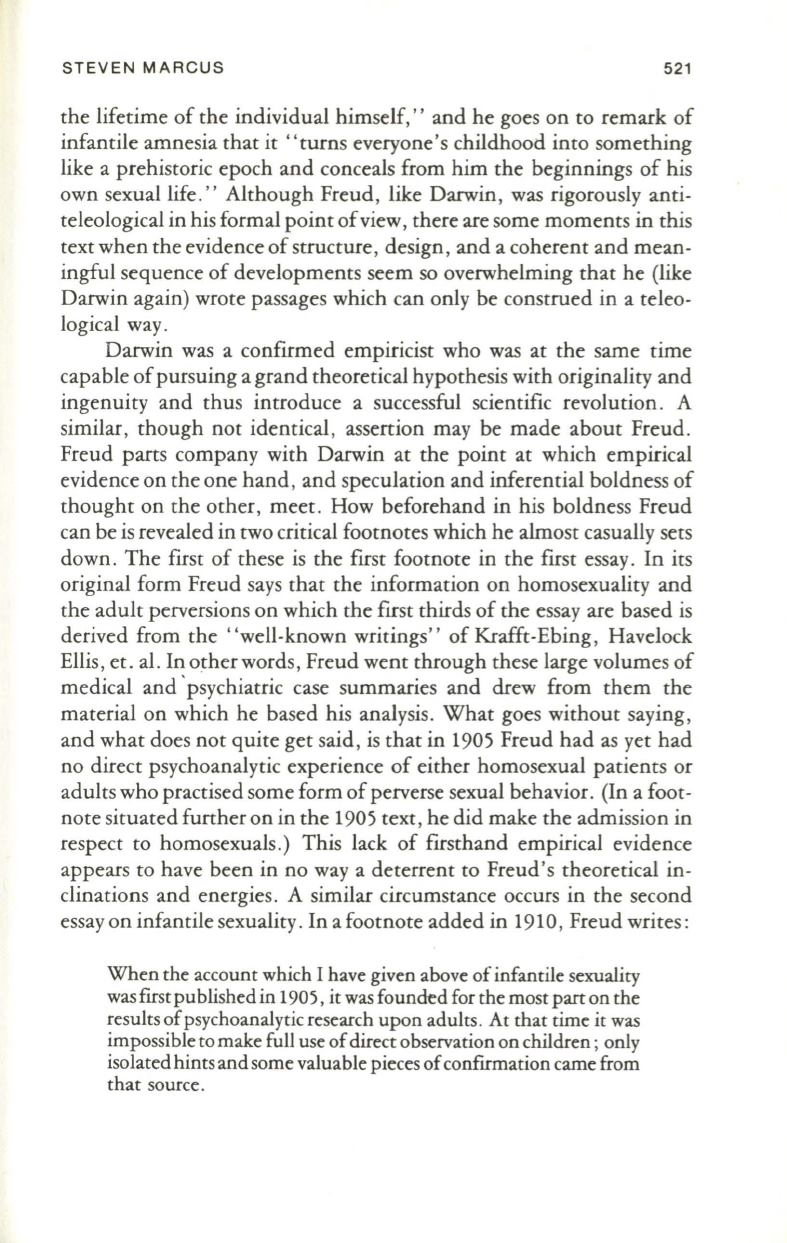
STEVEN MARCUS
521
the lifetime of the individual himself," and he goes on
to
remark of
infantile amnesia that it "turns everyone's childhood into something
like a prehistoric epoch and conceals from him the beginnings of his
own sexual life ." Although Freud, like Darwin, was rigorously anti–
teleological in his formal point ofview, there are some moments in this
text when the evidence of structure , design, and a coherent and mean–
ingful sequence of developments seem so overwhelming that he (like
Darwin again) wrote passages which can only be construed in a teleo–
logical way.
Darwin was a confirmed empiricist who was at the same time
capable ofpursuing a grand theoretical hypothesis with originality and
ingenuity and thus introduce a successful scientific revolution. A
similar, though not identical, assenion may be made about Freud .
Freud pans company with Darwin at the point at which empirical
evidence on the one hand, and speculation and inferential boldness of
thought on the other, meet. How beforehand in his boldness Freud
can be is revealed in two critical footnotes which he almost casually sets
down. The first of these is the first footnote in the first essay. In its
original form Freud says that the information on homosexuality and
the adult perversions on which the first thirds of the essay are based is
derived from the "well-known writings" of Krafft-Ebing , Havelock
Ellis, et. al. In other words , Freud went through these large volumes of
medical and ' psychiatric case summaries and drew from them the
material on which he based his analysis . What goes without saying,
and what does not quite get said, is that in 1905 Freud had as yet had
no direct psychoanalytic experience of either homosexual patients or
adults who practised some form of perverse sexual behavior. (In a foot–
note situated funher on in the 1905 text , he did make the admission in
respect to homosexuals .) This lack of firsthand empirical evidence
appears to have been in no way a deterrent to Freud 's theoretical in–
clinations and energies. A similar circumstance occurs in the second
essay on infantile sexuality . In a footnote added in 1910 , Freud writes:
When the account which I have given above of infantile sexuality
was ftrst published in 1905, it was found-ed for the most part on the
results ofpsychoanalytic research upon adults . At that time it was
impossible
to
make full
use
of direct observation on children; only
isolated hints and
some
valuable pieces ofconftrmation came from
that source .


